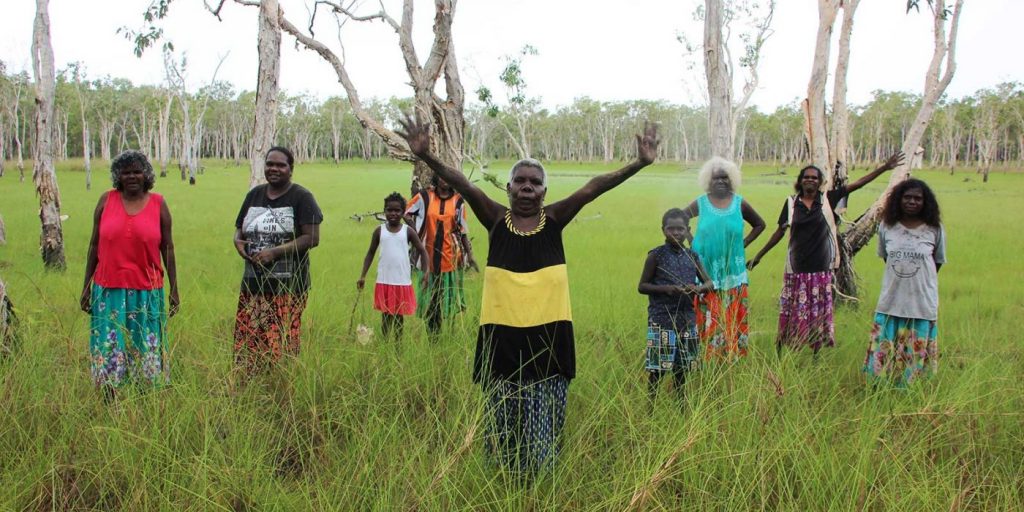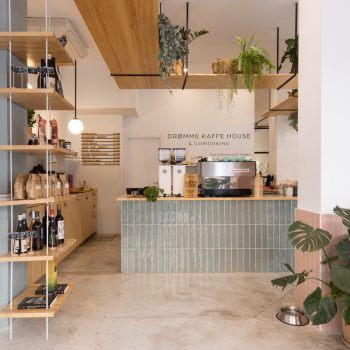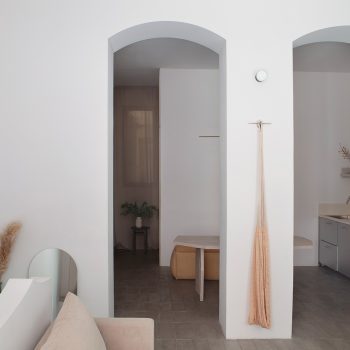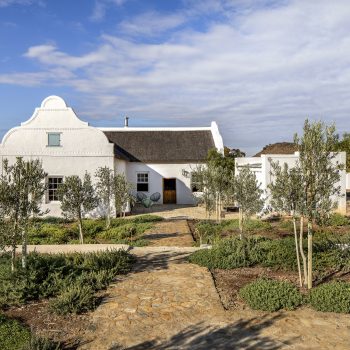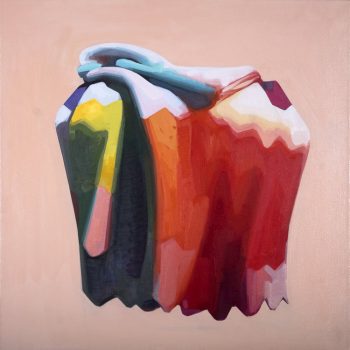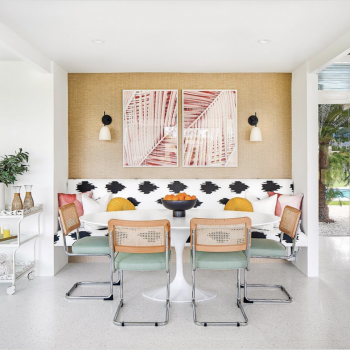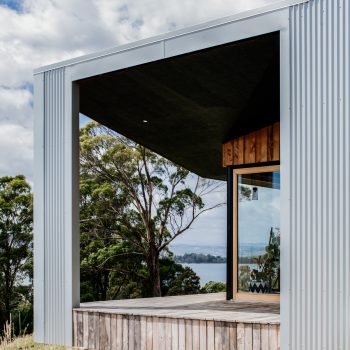While this was intended for publishing some weeks ago, the plethora of unique stories and cultural distinctions made the finishing point elusive. To that end, this study is by no means exhaustive, merely a snapshot of these amazing First Australian women, their impressive talent and entrepreneurship on an international stage.
_______________________________
As alluded to in various ways throughout the article, yet not spelled out, is the importance of the Bábbarra Women’s Centre as a cultural hub, in addition to the unparalleled work produced by the artists who both represent the centre as well as the greater area of Maningrida.
Just a few examples are required to educate us to the depth and detailed particulars of the Maningrida culture as seen through a single facet, the screen printing of fabric by the Bábbarra Women’s Centre artists.

It is not difficult to see that the underlying aspects of culture as manifested in the creation and aesthetics of the work, that the women’s culture, their land, their stories and the final products are indistinguishable from the people themselves: an extended interpretation of both a deeper cultural and artisanal history.
Importantly, the personal homeland stories represented on the screenprinted fabric, and their dissemination is informed by a profound relationship with the land.
The fathomless links and exclusive identifications predispose these artists to a degree of renown; to be lauded, applauded and rightfully hosted internationally. This level of exposure should have occurred naturally as befits their status as First Australians and their continuing tenure of the land for some 50,000 thousand years, and is long overdue.

Why? Few if any cultures can claim such status. The works of art produced by these Indigenous Australians (who view both the spirit and the natural world in entirely uncommon ways; in ways which precede the very concept of Western art) are born out of ancient knowledge, rituals, crafts and processes. This stated with an additional qualification that they themselves form only a small part of First Australian’s multi-lingual and extensive cultures.
To our great discredit, most Australians should, but do not, have any knowledge of the depth, diversity and singularity of the First Australian cultures on our doorstep. Of ancient cultures which significantly predate the discovery of ‘Australia’ in the early 17th century by Willem Janz in the Duyfken.
These products stand alone as individual artworks within international contexts due to their exceptional and undeniable integrity. No two histories the same, no two interpretations the same, no two objects the same.
It is uniquely exciting for all Australians to witness First Australian women strutting the world stage in Paris; educating the rest of the world about who they are, where they come from and why their culture is a small but vitally important part of the Northern Territory and Australia.
BÁBBARRA WOMEN’S CENTRE
“Bábbarra Women’s Centre is part of the Bawinanga Arts and Cultural division, which includes the Djomi Museum, Maningrida Arts and Culture and the Cultural Research Office.
 In Australia and around the world, Indigenous women are among the most marginalised and disadvantaged of all social groups. They are also the most economically vulnerable.
In Australia and around the world, Indigenous women are among the most marginalised and disadvantaged of all social groups. They are also the most economically vulnerable.
Bábbarra Women’s Centre works to change this narrative. A core objective since its inception has been to enable women to gain economic independence. Financial independence empowers women to make decisions that impact their own wellbeing and that of their families, communities and ancestral lands.”
Bábbarra Women’s Centre is our place, on our country.
‘We women are from more than 12 language groups in the Manangrida region. We come together at Bábbarra Women’s Centre to share our knowledge and ideas. That’s what led us to set up our main social enterprise: Bábbarra Designs. It’s been going strong since 1989.’
________________________________________________________
We design and hand-print exquisite textiles that we sell around the world.

Each length of fabric is unique and tells the ancestral stories of our Arnhem Land country and cultures.
People tell us our designs are bold and elegant, but for us they are more than designs: these designs tell the stories of our lives.
They bring a lot of joy to everyone – to us, our families and our customers alike. Working creatively with Bábbarra Designs is a way for us to achieve financial independence, for our community and the next generations.
Text from Bábbarra Womens Centre
_______________________________________________________
Bábbarra is a word in the Ndjébbana language of the Kunibídji people on whose country the community of Maningrida lies.
It is the name of a place belonging to the Dukúrrdji clan.

You say ‘Bábbarra’ with the stress on the first syllable: ‘bá’, and you can read the Bábbarra story.
_________________________________________________________
Click on images to see the finer details!
_______________________________________________________

Janet Marawarr is a talented linocut and screenprint designer. She regards textile design as an opportunity to work with colour and and new methods to express her djang (ancestral creator stories).

Marawarr has depicted kunkurra, the spiralling wind associated with several sites in the Kardbam clan….
Languages: Kuninjku, Kune
While Marawarr’s fabric is technically complex, it is both soft and powerfully graphic; making a nuanced statement as befits sophisticated interiors not unlike that below.


MAISON HAND: Appartement Lyon Bizollon / Photo: Felix Forest

NUNE Atlantic Loft / Image: Nicole Franzen
How beautiful would this fabric be in the Nune interior above.

On one level, this design can be interpreted as a depiction of the kinds of mini-cyclones common during the wet season in Arnhem Land…
_________________________________________________________
Raylene Bonson is a talented textile artist, specialising in linocut technique. She has been working with Bábbarra Designs since 2012. Raylene was mentored by her late mother, Nancy Gununwanga, a senior textile artist at Bábbarra Designs and a founding member of Bábbarra Women’s Centre.
Ndjébbana (mother language), Kuninjku (father language)
 When those two old people tasted that water at Maningrida from the Djomi spring, it was sweet freshwater and they decided to stay here. People here had no clothes in those time, we were just wearing string morkoi (loin cloths).
When those two old people tasted that water at Maningrida from the Djomi spring, it was sweet freshwater and they decided to stay here. People here had no clothes in those time, we were just wearing string morkoi (loin cloths).
Seven tribes were here then, but now in Maningrida there are lots more languages.

The simple, layered ‘cross hatching’ technique creates textural and illustrative density; together these elements align to the diverse organic nature of the land, as well as the rare and essential qualities of the paperbark material.
Overlaying colour and stroke may symbolise also, a degree of adptability in story telling within both the nature of context and that of time passing.
These exquisite fabrics lend themselves generally to contemporary interior design schemes.

ROYAL ROULETTE: Porto Vecchio, Mora Beach

And especially to a refined eclecticism inherent in the ‘beach style’ employed by Royal Roulette in the Porto Vecchio redesign above.
________________________________________________________

BEATA HEUMAN: Paddington Pied à Terre

Genevieve Smith started working at Bábbarra in 2008 and has been…lino printing and screen printing since then.
Genevieve is the first one in her family to become an artist. She is helping her daughter Laquisha who comes in for work experience…how to screen print and lino print.
The glorious palette and organic mark making Smith has employed here is interchangeable with soft furnishing fabrics in many of Beata Heuman’s interiors.

Genevieve’s language: Ndjébbana
________________________________________________________

This is my country. In this painting, I’m looking at her little bit different way. This is what we see when we’re kurrulk kare (going underground)
Man-kurndalh (Black Plum) I call mother. It is my mother’s Djang/Dreaming.
Jennifer Wurrkidj is a highly regarded textile artist who has been working at Bábbarra Designs since 2007. Her print designs often feature bush foods and food-collecting and reference the activities of ancestor beings and the ceremonial sites of her homeland, Mumeka.

Language: Kuninjku

JESSICA HELGERSON INTERIOR DESIGN (JHID): Park Slope Limestone
Whether paired with traditional or contemporary styling, the Kururrk Kare screenprint displays dynamic organic graphics, as well as historic and culturally specific references, making it authoritative in every context.
________________________________________________________
______________________________________________________
BÁBBARRA WOMEN TRAVEL TO PARIS & EXHIBIT AT THE AUSTRALIAN EMBASSY

As mentioned earlier it is remarkably exciting to see First Australian women from a small part of Arnhem Land and the Northern Territory wearing and exhibiting their homeland’s particular stories on fabric in Europe; it is something all Australian’s can be proud of.
These artists from Bábbarra Women’s Centre project eloquently the inherent yet esoteric attachments to and associations with the land in ways no other Australians are able to do.
This is not just an art exhibition; it’s also really about embracing the diversity of languages from Maningrida and celebrating that in an international realm.
_______________________________________________________
 Bábbarra Women’s Centre in Arnhem Land sent…five women to Paris for an exhibition and series of workshops – but getting passports for everyone proved a challenge.
Bábbarra Women’s Centre in Arnhem Land sent…five women to Paris for an exhibition and series of workshops – but getting passports for everyone proved a challenge.
The artist’s exhibited their work at the Australian embassy in Paris.
Ingrid Johanson, the manager of the centre…pitched the exhibition to the [Australian] embassy last year knowing 2019 marked the United Nations Year of Indigenous Languages.
Maningrida is one of the world’s most linguistically diverse places per capita. There are 12 languages here for around 2,500 people, she said.
Text from SBS story
_______________________________________________________
The centre works with dozens of local women in Maningrida, many of whom count English as their third or fourth language.

Its assistant manager, Burarra woman Jess Phillips…said the languages at the women’s centre come from many different areas.
Text and image SBS

The exhibition, titled Jarracharra (meaning “dry season wind” in the local Burarra language), will feature 12 artists from the centre. Just under half will travel to Paris, alongside Johanson and Jessica Phillips, who co-curated the exhibition.
Text and image The Guardian
Artist Janet Marawarr…from the Mumeka homeland. “I’m feeling so excited for Paris,” she says. “We’re going to dance and sing for the French people our cultural songs from Maningrida. I’ll sing when I go to Paris so those people a long way away can hear our culture and songs.

/Bábbarra Designs
Text and image The Guardian

